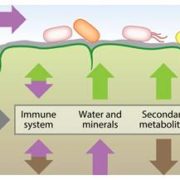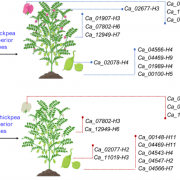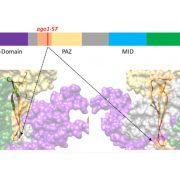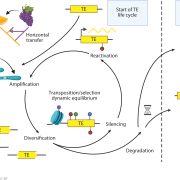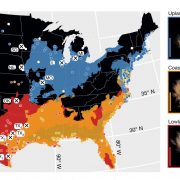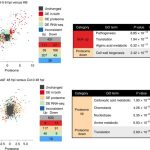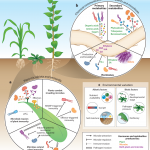Convergent loss of plant immune receptors and signaling pathways (Plant Cell)
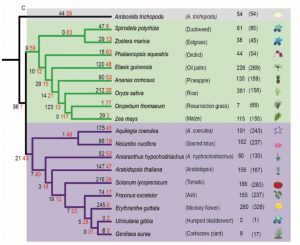 Nucleotide-binding leucine-rich repeat receptors (NLRs) are important components of the plant immune system. They are intracellular receptors that act downstream of the cell-surface receptors, and initiate the so-called effector-triggered immunity (ETI). In most plants, the NLR gene family is large and diverse. In exploring this gene family, Baggs et al. found a small number of angiosperm species that unexpectedly showed independently arising strong contractions of the NLR gene family; these species include duckweed (Spirodela polyrhiza), eelgrass (Zostera marina), corkscrew plant (Genlisea aurea) and humped bladderwort (Utricularia gibba). Intriguingly, these species are adapted to water-saturated marine or bog habitats. Further analysis showed that in these NLR-reduced plants, some of genes that act downstream in the ETI pathway are also reduced or lacking; the authors refer to these genes as ASTREL (AngioSperm Typically-Retained, EDS1-Lost) genes. ASTREL genes include those encoding three proteins that function as a complex, EDS1, PAD4, SAG101. Further study showed that ASTREL genes are normally induced by pathogens or salicylic acid (SA, a hormone that mediates pathogen responses) but suppressed by abscissic acid (ABA, the hormone that mediates drought responses). This study shows that “comparative phylogenomic analysis can fill the gaps in our understanding of complex plant signaling pathways,” and also suggests that the small, fast-growing duckweed S. polyrhiza could be a new model for studies of plant immune signaling. (Summary by Mary Williams @PlantTeaching) Plant Cell 10.1105/tpc.19.00903
Nucleotide-binding leucine-rich repeat receptors (NLRs) are important components of the plant immune system. They are intracellular receptors that act downstream of the cell-surface receptors, and initiate the so-called effector-triggered immunity (ETI). In most plants, the NLR gene family is large and diverse. In exploring this gene family, Baggs et al. found a small number of angiosperm species that unexpectedly showed independently arising strong contractions of the NLR gene family; these species include duckweed (Spirodela polyrhiza), eelgrass (Zostera marina), corkscrew plant (Genlisea aurea) and humped bladderwort (Utricularia gibba). Intriguingly, these species are adapted to water-saturated marine or bog habitats. Further analysis showed that in these NLR-reduced plants, some of genes that act downstream in the ETI pathway are also reduced or lacking; the authors refer to these genes as ASTREL (AngioSperm Typically-Retained, EDS1-Lost) genes. ASTREL genes include those encoding three proteins that function as a complex, EDS1, PAD4, SAG101. Further study showed that ASTREL genes are normally induced by pathogens or salicylic acid (SA, a hormone that mediates pathogen responses) but suppressed by abscissic acid (ABA, the hormone that mediates drought responses). This study shows that “comparative phylogenomic analysis can fill the gaps in our understanding of complex plant signaling pathways,” and also suggests that the small, fast-growing duckweed S. polyrhiza could be a new model for studies of plant immune signaling. (Summary by Mary Williams @PlantTeaching) Plant Cell 10.1105/tpc.19.00903


